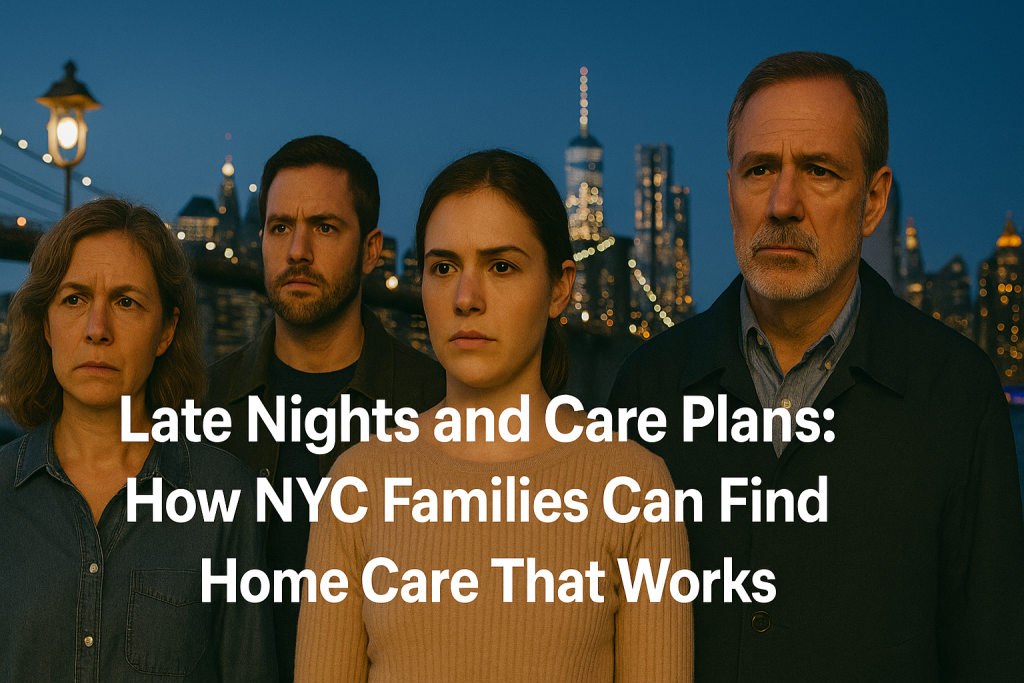Table of Content
1.Introduction: The Midnight Struggle
2.The Home Care Puzzle in NYC
3.Why Working Families Struggle More
4.Practical Steps to Build a Sustainable Care Plan
5.The Emotional Cost of Ignoring a Plan
6.Real NYC Stories: What Works
Introduction: The Midnight Struggle
It’s 11:30 p.m. in Queens. A mother finishes her double shift, then rushes home to check on her father’s medications. Across Brooklyn, a son puts his kids to bed before driving to the Bronx to sit with his grandmother overnight.
For New York’s working families, balancing jobs, kids, and elder care is a nightly reality. The late-night care plan is real — but it doesn’t have to break families. With the right guidance, working New Yorkers can navigate home care options that protect loved ones without sacrificing their own health.
ADVERTISEMENT
At SecureSafer, we see these stories every day. Families stretched to the limit need clear, compassionate solutions.
The Home Care Puzzle in NYC
Home care in New York is complicated because it comes with overlapping programs and rules:
- Medicare covers limited skilled nursing or rehab services, not daily living support.
- Medicaid provides long-term care through Managed Long-Term Care (MLTC) plans, but eligibility and hours can be restrictive (medicare.gov).
- Private Insurance often excludes custodial care.
- Out-of-Pocket Options exist, but costs can climb to thousands per month.
Families end up patching together solutions — and burning out.
Why Working Families Struggle More
NYC’s cost of living means most caregivers also work full-time. That leads to late-night medication runs, early-morning meal prep, and constant worry. Studies from the New York State Department of Health (health.ny.gov) show that caregivers working more than 30 hours a week report twice the stress levels of non-working caregivers.
For immigrant families, language barriers and cultural expectations can make navigating the system even harder.
Practical Steps to Build a Sustainable Care Plan
1. Know Your Coverage Limits
Before assuming Medicaid or Medicare will cover everything, review what’s actually included. Many families discover too late that daily home visits aren’t guaranteed.
2. Explore Employer Flexibility
Some NYC employers offer caregiving leave or flexible schedules under state law. Check if you qualify.
3. Mix and Match Resources
Don’t rely on one program. Combine MLTC services with local community support groups and short-term paid aides to cover gaps.
4. Seek Professional Guidance
Insurance brokers familiar with Medicaid, Medicare, and private policies can map out sustainable solutions.
The Emotional Cost of Ignoring a Plan
Families who “wing it” often end up exhausted. Missed shifts, strained marriages, and declining health of both caregivers and loved ones are common. Without a clear plan, crises hit harder — ER visits, missed medications, or falls.
ADVERTISEMENT
That’s why having a written, realistic care plan is as essential as having health insurance itself.
How SecureSafer Supports NYC Families
We help families create care strategies that actually work:
- Reviewing insurance options across Medicaid, Medicare, and private plans.
- Helping immigrant families find language-specific guides.
- Connecting families with borough-based home care providers and support groups.
- Ensuring working parents don’t carry the full weight alone.
Your family deserves care that fits your schedule, culture, and budget — not a system that leaves you drained.
Compliance Note
This content is for educational purposes only. SecureSafer does not guarantee Medicaid or Medicare approvals, coverage hours, or cost savings. For official information, visit Medicare.gov, DFS, or NY State Health.
ADVERTISEMENT

